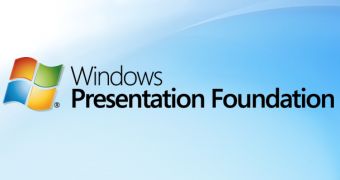Windows Presentation Foundation is a core feature of Windows Vista. Formerly codenamed Avalon, Windows Presentation Foundation is positioned as an unified presentation subsystem for the Windows operating system. Two components make up the subsystem: a display engine and a managed-code programming framework. This means that on Windows Vista, developers are able to take visual styles to the next level, by tapping into the extensive control delivered by Windows presentation Foundation over the building, displaying and managing of files, media and the graphical user interface. Tim Sneath, Microsoft Group Manager for Client Platforms, believes that WPF is essentially a technology that requires no advertising, or evangelism for that matter, but still he made available for download a Technical Overview of the Windows Vista subsystem.
"The great thing about evangelizing a technology like WPF is that it really sells itself - you just have to show a few example applications like the New York Times Reader, the great sample apps from Thirteen23, Family.Show or the Scripps C-ME application, and people quickly get a sense of the kinds of application you can build. Despite that, I still get regular requests both internally and externally for a presentation that provides a high-level overview of WPF: why it's valuable, how customers are using it, how each of the features fit together in the overall architecture, and what the future roadmap looks like. To that end, I'm submitting to popular opinion and releasing a WPF slide deck that I've been gradually putting together," Sneath revealed.
Microsoft has focused on establishing a set of clearly delimited design principles for Windows Presentation Foundation. The Windows subsystem is set up to streamline integration via the delivery of a unified Application Programming Interface that spans across Document, User Interface and Base services as well as Core presentation. WPF also makes the best of the Graphical Processing Unit in order to enable vector graphics. But Windows Presentation Foundation also offers: "Declarative programming - Windows Presentation Foundation introduces XAML (eXtensible Application Markup Language), an XML-based language for instantiating and populating nested object hierarchies. Easy deployment - with support for both standalone applications and Web-browser applications, Windows Presentation Foundation offers the best of both deployment models. Document lifecycle - Windows Presentation Foundation introduces a new set of document and print technologies," Sneath added.

 14 DAY TRIAL //
14 DAY TRIAL //